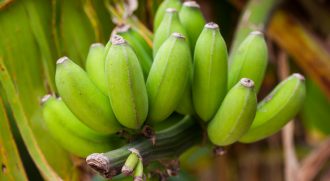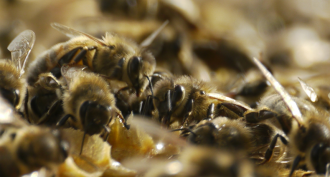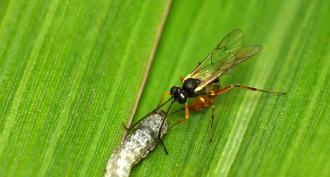Agriculture
-
 Agriculture
AgricultureLivestock: A need to save rare breeds
New studies and ongoing work highlight why society should save rare livestock breeds — and the part that technology can play.
-
 Agriculture
AgricultureExplainer: What is a gene bank?
Most banks store money. But some very special ones store deposits that may prove even more valuable: tissues that could prevent the extinction of breeds and species.
-
 Tech
TechDrones put spying eyes in the sky
From keeping tabs on changing landscapes to protecting animals from poachers, scientists are using drones to push their fields forward.
-
 Plants
PlantsSaving the banana
A number of diseases threaten the world’s most popular fruit. Scientists are working to fight these blights. But if they don’t succeed, the sweet banana that’s a breakfast staple could disappear.
-
 Environment
EnvironmentBug-killer linked to decline in birds
One of the most popular chemicals used to protect crops from bugs may also take a toll on birds, a Dutch study finds. U.S. farmers also rely on these insecticides, a second study finds.
By Stephen Ornes and Janet Raloff -
 Agriculture
AgricultureYour food choices affect Earth’s climate
Producing food can put a lot of climate-warming pollutants into the atmosphere. But some foods, especially meats, contribute more than others.
By Janet Raloff -
 Microbes
MicrobesSuperbugs: A silent health emergency
Have antibiotics become too popular? Overusing these medicines fuels resistant germs that pose a global health threat.
-
 Agriculture
AgricultureHow to limit the need for pesticides
The American Academy of Pediatrics suggests taking steps to limit children’s exposure to pesticides.
-
 Animals
AnimalsWhy are bees vanishing?
Scientists find evidence that pesticides, disease and other threats are devastating bees. And that could hurt farmers big time.
-
 Agriculture
AgricultureThe cabbage’s clock
A newly harvested plant, fruit or vegetable does not turn off — like a switch — and die, scientists report. Instead, an internal “clock” inside the fresh-picked plant continues to tick away. It responds to light and darkness, just as when it had been rooted in the soil.
-

-
 Agriculture
AgricultureCool Jobs: Green Science
In parts of the Arctic, entire forests are creeping northward. Luckily, ecologist Serge Payette is hot on their trail.